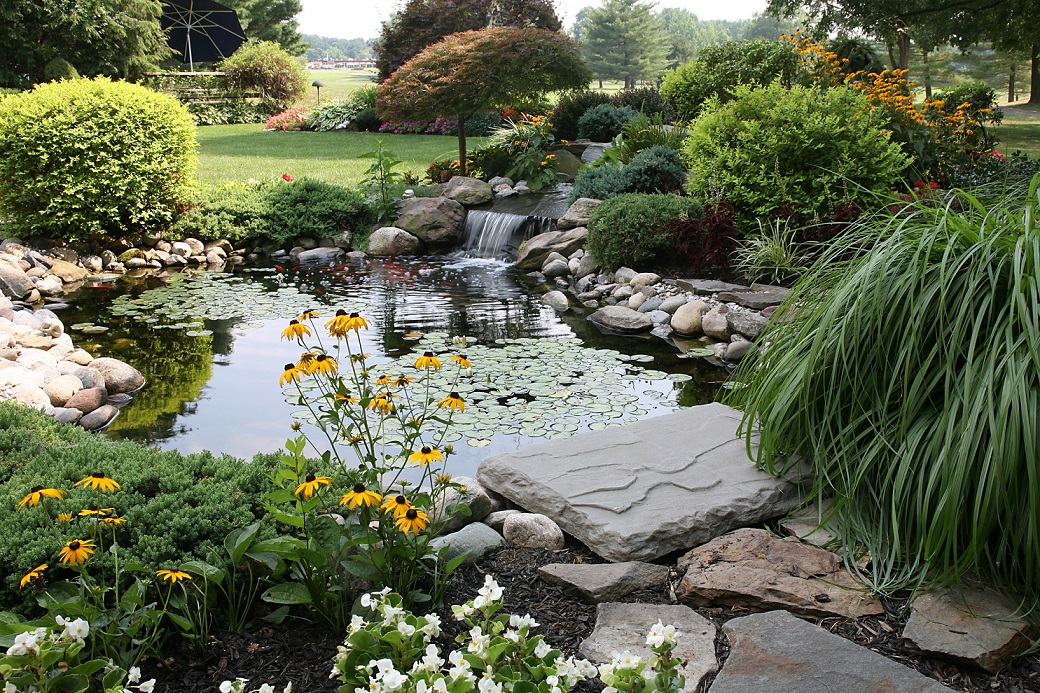Feng Shui, the ancient Chinese art of placement and harmony, extends beyond the home interior to include outdoor spaces such as gardens and water features. Here are some basic principles to help you design a garden and incorporate water features that enhance the flow of positive energy (Chi) and create a balanced and serene environment.
1. Garden Layout and Design
- Balance and Harmony:
- Ensure that your garden has a balance of elements (wood, fire, earth, metal, and water) to create a harmonious space.
- Avoid clutter and excessive straight lines or harsh corners; instead, opt for gentle curves and natural shapes to promote a smooth flow of energy.
- Entrance and Pathways:
- The entrance to your garden should be inviting and free from obstacles, symbolizing open opportunities.
- Pathways should meander rather than being straight, guiding the Chi gently through the garden.
2. Plant Selection and Placement
- Diversity and Health:
- Choose a variety of plants to create a rich and vibrant environment. Healthy, thriving plants symbolize positive energy and growth.
- Incorporate plants of different heights, colors, and textures to add visual interest and balance.
- Avoid Sharp and Thorny Plants:
- Avoid placing sharp or thorny plants near pathways or seating areas, as they can create negative energy (Sha Chi) and discomfort.
- Grouping and Positioning:
- Group plants in odd numbers (three, five, seven) to enhance energy flow.
- Position larger plants or trees at the back of the garden to provide a sense of stability and protection.
3. Water Features
- Placement:
- Water features should be placed where they can activate and enhance positive energy, such as near the entrance to your home or in the wealth corner (southeast) of your garden.
- Ensure water flows towards your home, symbolizing the flow of abundance and prosperity.
- Type of Water Feature:
- Opt for gently flowing water features like fountains, streams, or ponds rather than still or stagnant water.
- The sound of moving water should be soothing and not too loud or overpowering.
- Maintenance:
- Keep water features clean and well-maintained to avoid stagnant water, which can attract negative energy and mosquitoes.
- Regularly check for leaks or mechanical issues to ensure continuous positive energy flow.
4. Elements and Enhancements
- Fire Elements:
- Introduce fire elements, such as a small fire pit, lanterns, or candles, to provide warmth and energy balance. Fire elements are best placed in the south area of your garden.
- Earth Elements:
- Use rocks, stones, and ceramics to introduce the earth element. These should be placed in the southwest and northeast areas to promote stability and grounding.
- Metal Elements:
- Incorporate metal sculptures, wind chimes, or garden furniture to enhance the energy of the west and northwest areas. Metal elements bring clarity and precision.
- Wood Elements:
- Wooden structures like pergolas, benches, or trellises can enhance the energy of the east and southeast areas, promoting growth and vitality.
5. Color and Decor
- Color Balance:
- Use colors thoughtfully to enhance specific energies in different areas. For example, red and orange for fire energy, green for wood, and blue or black for water.
- Balance bright colors with softer, neutral tones to create a peaceful and inviting atmosphere.
- Decorative Elements:
- Add garden art, statues, or ornaments that resonate with you and reflect positive themes.
- Avoid overly aggressive or harsh-looking decor that can disrupt the harmonious flow of energy.
Conclusion
By applying these basic Feng Shui principles to your garden and water features, you can create an outdoor space that promotes tranquility, balance, and positive energy. Whether you have a large garden or a small patio, thoughtful design and placement of elements can significantly enhance the overall harmony and enjoyment of your outdoor environment.
